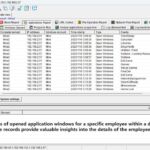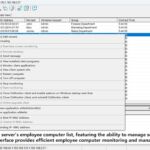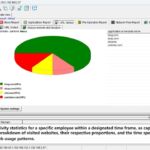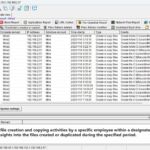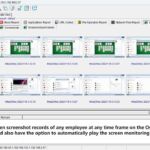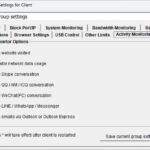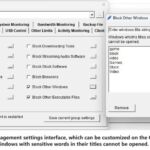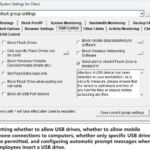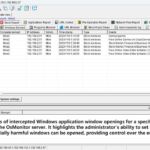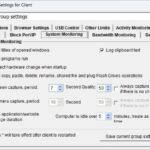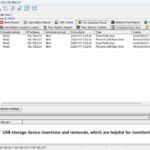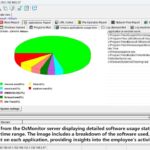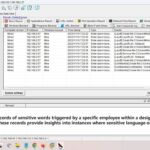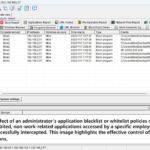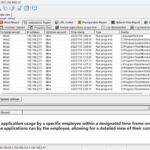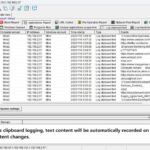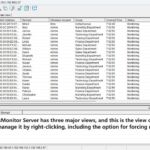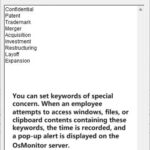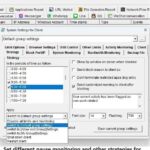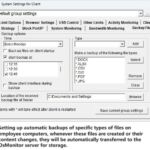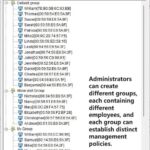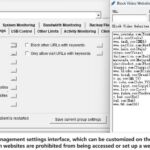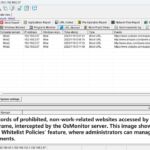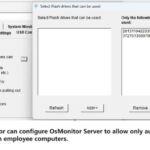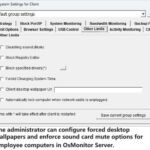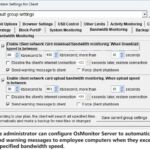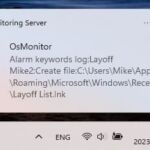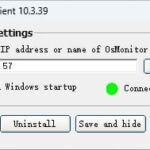Sorting algorithms play a pivotal role in company computer monitoring software. These algorithms efficiently organize vast amounts of monitoring data, presenting various pieces of information systematically to users. Despite often staying behind the scenes, they are indispensable in aiding users to better comprehend and analyze information. The value of this information is significant, covering essential aspects such as employees' uptime, activity logs, and resource utilization. However, concurrently, we must also acknowledge the potential challenges and opportunities, as they are key factors driving continuous growth along our path forward.
Here are the challenges sorting algorithms face in company computer monitoring software:
- Large Data Volume and Frequent Updates: Internal computer monitoring data within a company can be substantial and subject to rapid updates. Selecting suitable sorting algorithms to efficiently handle and update data in such scenarios poses a challenge.
- Real-time Requirements: Real-time display and sorting of data are occasionally necessary in monitoring software to enable users to make timely decisions. Therefore, sorting algorithms need to be sufficiently swift to complete the sorting process within short timeframes.
- Multidimensional Data Sorting: Monitoring data often possesses multiple dimensions, such as time, resource utilization, user activity, etc. Opting for an appropriate multidimensional sorting algorithm to sort across various dimensions might necessitate more complex algorithms and data structures.
- User Personalization Needs: Different users may have distinct preferences and requirements for how monitoring data should be sorted. Thus, the software might need to support customized sorting methods, adding to the complexity of algorithm design.
Sorting algorithms in company computer monitoring software present the following opportunities:
- Performance Optimization: Optimizing the performance of sorting algorithms is a crucial opportunity. Selecting algorithms best suited for data scale and characteristics, along with optimizing algorithms and data structures for real-world application scenarios, can significantly enhance software performance.
- Parallel Processing: Modern computers often feature multi-core processors and parallel computing capabilities. Sorting algorithms can leverage parallel processing to expedite the sorting process, thereby handling large volumes of data more swiftly.
- Adaptive Algorithms: Designing sorting algorithms that can adapt and adjust based on data characteristics ensures efficient performance across various scenarios, better meeting diverse user needs.
- Data Visualization: Sorted data lends itself well to visualization. By appropriately sorting data, improved data visualization effects can be achieved within monitoring software, aiding users in intuitively grasping the data.
- Integration with Machine Learning: At times, sorting algorithms can combine with machine learning techniques to optimize sorting methods based on user historical behavior and preferences, providing more personalized data displays.
In conclusion, sorting algorithms within company computer monitoring software are anything but idle. Handling such vast and multidimensional data is no easy task. However, remember that they also provide us with numerous opportunities. We can strive to optimize performance, harness parallel processing, and implement intelligent adaptability. By integrating these techniques comprehensively, we can design more efficient, personalized, and user-friendly sorting functionalities, making our monitoring software practical and valuable. Thus, sorting algorithms can truly shine on the software stage!
About OsMonitor:
The mission of OsMonitor is to create a Windows computer system tailored for work purposes, effectively regulating employee computer behavior. It enables employers to understand what employees are doing each day, monitoring every action, including screen activity and internet usage. Additionally, it restricts employees from engaging in specific activities such as online shopping, gaming, and the use of USB drives.
OsMonitor, designed purely as software, is remarkably user-friendly and requires no additional hardware modifications. A single management machine can oversee all employee computers. As a leading brand in employee computer monitoring software with over a decade of successful operation, OsMonitor has rapidly captured the global market with its minimal file size and excellent cost-effectiveness compared to similar software. At this moment, thousands of business computers worldwide are running OsMonitor daily.




